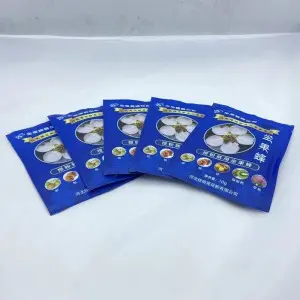ਅਕਤੂਃ . 31, 2024 09:17 Back to list
pear pollen compatibility factories
Pear Pollen Compatibility and Its Importance in Orchard Management
Pollen compatibility is a crucial factor in the successful cultivation of pears. In commercial pear orchards, understanding the intricacies of pollen compatibility can significantly enhance fruit set, quality, and overall yield. This article delves into the importance of pollen compatibility among various pear varieties and how it influences orchard management practices.
Pear Pollen Compatibility and Its Importance in Orchard Management
Understanding pollen compatibility involves knowing the genetic makeup of different pear varieties. Different types of pears have diverse flowering times and pollen viability, which can impact the likelihood of successful cross-pollination. For instance, some pear varieties, like ‘Bartlett’ and ‘Bosc’, are known to be good pollinators for each other due to their overlapping blooming periods and compatible pollen. In contrast, certain varieties may fail to pollinate each other even if they bloom at the same time, due to genetic incompatibilities.
pear pollen compatibility factories

In the planning stages of an orchard, it is crucial for growers to carefully select compatible pear varieties to ensure effective pollination. Planting a mix of compatible pollenizers alongside primary varieties is a common practice. For instance, if a grower is cultivating ‘Anjou’ pears, they may choose to plant varieties like ‘Bartlett’ or ‘Red Clapp’ to enhance the likelihood of successful cross-pollination. Additionally, growers should consider the bloom time of each variety to align the flowering period.
The location of trees plays a significant role in successful pollination as well. Pear trees often rely on insect pollinators, particularly bees, to transfer pollen from one bloom to another. Therefore, planting compatible varieties within close proximity can improve the chances of bees transferring pollen effectively, leading to higher fruit set and better quality fruits.
Apart from the selection of pollen compatible varieties, growers should also pay attention to environmental factors that can affect pollination. Weather conditions such as temperature and humidity during the flowering period can have profound effects on pollen viability and insect activity. Optimal conditions are necessary for bees to be active and for pollen to be successfully transferred, thereby enhancing the overall productivity of the orchard.
In conclusion, understanding pear pollen compatibility is essential for successful orchard management. By selecting the right combination of compatible pear varieties and optimizing planting layout and environmental conditions, growers can significantly improve pollination rates and fruit yield. As the demand for quality pears continues to rise, mastering the science of pollen compatibility will play a pivotal role in the sustainable production of this beloved fruit.
-
Pollen Peach Tree AI Management with GPT-4-Turbo
NewsJul.31,2025
-
Eco Fruit Paper Bags for Peak Freshness | Durability Focused
NewsJul.31,2025
-
Pollen Peach Tree for Pure Pollination and High-Quality Peach Pollen
NewsJul.30,2025
-
Premium Cherry Pollen for Pure Pollination & Different Types
NewsJul.30,2025
-
Artificial Pollination Solutions for Various Plant Pollen Types
NewsJul.29,2025
-
Artificial Pollination Solutions for All Plant Pollen Types
NewsJul.29,2025